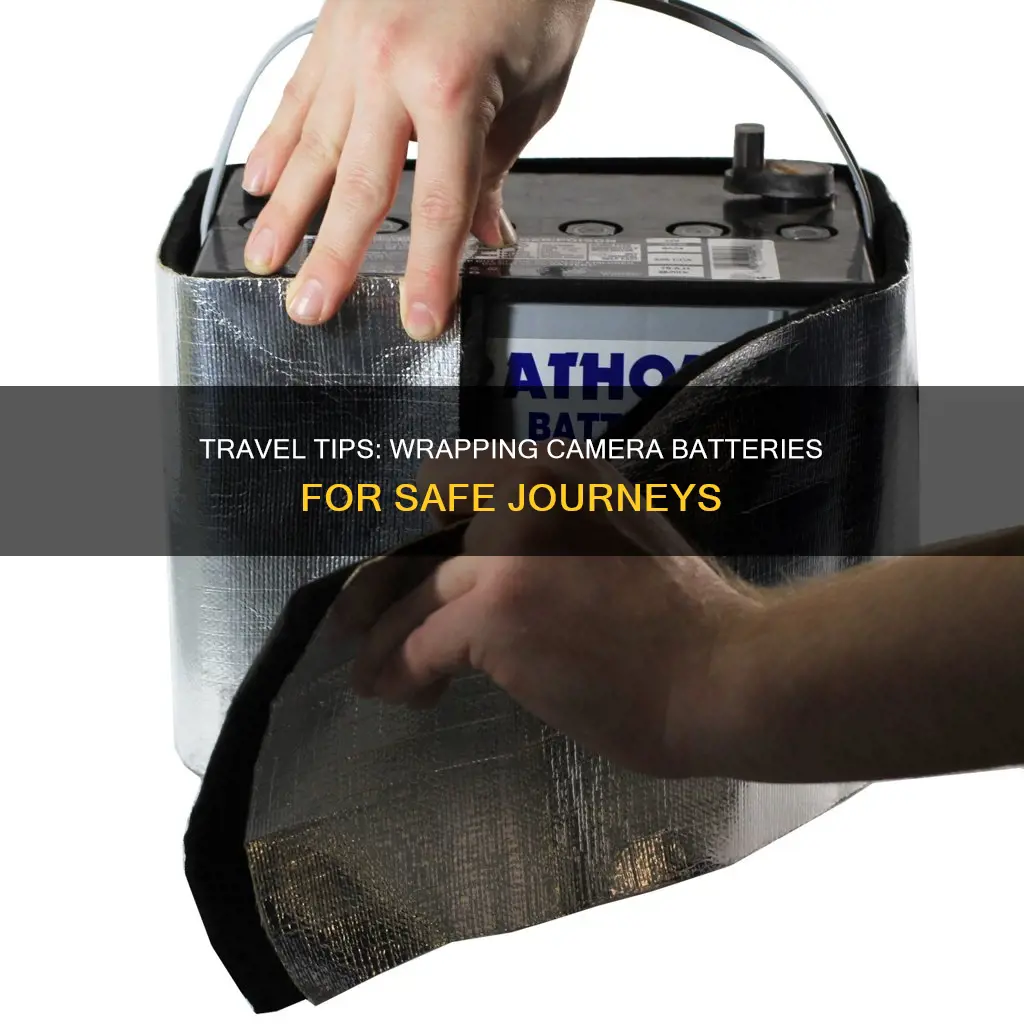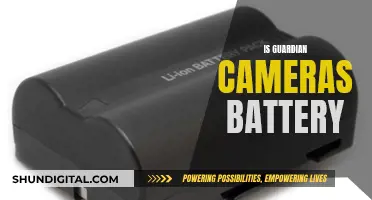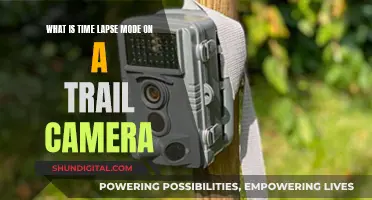
Lithium-ion batteries are commonly used in cameras and other electronic devices. When travelling with lithium-ion camera batteries, it is important to take precautions to ensure they are wrapped and packed safely and securely. Here are some tips for wrapping and packing your batteries:
- Use a battery case: Invest in a battery case specifically designed for your camera batteries. This will protect them from damage and prevent them from coming into contact with other metal objects in your luggage.
- Cover the terminals: Use electrical tape or a battery terminal cover to cover the terminals of your batteries. This will prevent them from coming into contact with other metal objects and causing a short circuit.
- Pack in carry-on luggage: Always pack your camera batteries in your carry-on luggage. This will allow you to keep an eye on them and ensure they are not damaged during transit.
- Declare at security: When going through airport security, be sure to declare your camera batteries to avoid any delays or issues.
- Watt-hour rating: Be mindful of the watt-hour rating of your batteries. Lithium-ion batteries with a watt-hour rating of 100Wh or less can be carried in unlimited quantities. Batteries with a higher watt-hour rating may require airline approval and there may be limits on the number of batteries allowed per person.
- Packaging: Place your batteries in their original packaging, a plastic bag, or a protective case. This will prevent short circuits and protect the batteries from damage.
| Characteristics | Values |
|---|---|
| Type of batteries | Lithium-ion |
| Battery placement | Should be removed from the camera and placed in carry-on luggage |
| Watt-hour rating | 100Wh or less can be carried in unlimited quantities; 101-160Wh require airline approval, with a limit of 2 batteries per person |
| Packaging | Should be individually wrapped in plastic or electrical tape to prevent short-circuiting |
| Terminal protection | Tape over the terminals or use a plastic bag to prevent short-circuiting |
| Number of batteries | Up to eight small batteries or four large batteries can be carried on the airplane |
| Battery case | Use a battery case or small zipper case to store and protect the batteries |
| Declaration | Declare batteries at security to prevent delays |
What You'll Learn

Use plastic or electrical tape to prevent short-circuiting
When preparing lithium-ion camera batteries for travel, it is important to take precautions to prevent short-circuiting and ensure safe transportation. One effective method is to use plastic or electrical tape to cover the battery terminals. Here are some detailed instructions to properly secure your batteries:
Firstly, remove the batteries from your camera equipment. It is recommended to keep them in their original packaging if possible, as it is designed to protect the batteries and prevent short-circuiting. However, if the original packaging is not available, you can use plastic or electrical tape as an alternative. Cover the battery terminals with tape to prevent accidental contact with other metal objects, which could lead to a short circuit. Make sure to use enough tape to securely cover the terminals, but avoid wrapping the entire battery, as this may not be necessary.
After taping the terminals, place each battery in a separate plastic bag or protective case. This additional layer of protection will help prevent accidental contact between the battery terminals and other metal objects in your luggage. It is also important to store and transport your lithium-ion camera batteries in a cool, dry place. Avoid exposing them to extreme temperatures, as this can damage the batteries and increase the risk of malfunction.
When travelling, always carry your lithium-ion camera batteries in your carry-on luggage. This allows you to keep them within sight and prevent potential damage from rough handling. Additionally, in the unlikely event of a battery malfunction, having them in the cabin enables flight crews to monitor conditions and address any issues promptly.
By following these steps and using plastic or electrical tape to cover the battery terminals, you can help prevent short-circuiting and ensure the safe transportation of your lithium-ion camera batteries during travel.
Checking Your Alro Camera's Battery Status: A Step-by-Step Guide
You may want to see also

Store in carry-on luggage
To ensure the safety of lithium-ion camera batteries during travel, it is recommended to store them in your carry-on luggage. Here are some detailed instructions to follow:
Choose the Right Bag:
Select a small bag specifically designed for battery storage, such as a protective case or a plastic bag. This will help you keep the batteries secure and easily accessible.
Quantity and Capacity Limits:
Be mindful of the quantity and capacity limits for lithium-ion batteries. You can carry multiple small dry-cell batteries (AA, AAA, C, and D) without any restrictions. However, for lithium-ion batteries, the limit is typically two spare batteries per passenger, with a maximum watt-hour rating of 100Wh per battery. If you need to carry larger or additional batteries, check with your airline for specific regulations and obtain their approval beforehand.
Protect the Battery Terminals:
It is crucial to protect the battery terminals to prevent short circuits. Cover the terminals with electrical tape or use the manufacturer's original packaging if available. This will ensure that the battery terminals are isolated and protected from accidental activation.
Separate and Secure the Batteries:
Place each battery in its own protective case or plastic bag to avoid contact with other metal objects. If using a plastic bag, you can secure it with a zip tie or elastic band to ensure the battery stays inside. Additionally, consider placing batteries in separate bags to provide further protection.
Store in a Cool, Dry Place:
Lithium-ion batteries should be stored in a cool, dry location within your carry-on luggage. Avoid exposing them to extreme temperatures, as this can damage the batteries and increase the risk of malfunction.
Declare at Security:
When passing through airport security, remember to declare your camera batteries. This proactive measure will help prevent any delays or issues at the security checkpoint.
Stay Up to Date with Regulations:
Keep in mind that regulations regarding lithium-ion batteries for air travel can change. It is recommended to check with the relevant aviation authorities, such as the FAA, TSA, or EASA, for the latest guidelines before your trip. Staying informed will ensure that you are compliant with the most current safety measures.
Charging the Disney Camera: Hannah Montana's Guide
You may want to see also

Check airline-specific regulations
When it comes to travelling with lithium-ion camera batteries, it is important to check the specific regulations of your chosen airline. While there are some general guidelines, such as the requirement to carry lithium-ion batteries in your hand luggage, individual airlines may have their own rules and restrictions. Here are some key points to consider when checking airline-specific regulations:
- Quantity and Wattage Limits: Different airlines may have varying limits on the number and wattage of lithium-ion batteries you can carry. Some airlines may allow up to four batteries under 100 watts each, while others may permit up to eight. For larger batteries, typically those between 100 and 160 watt-hours, you may need explicit airline approval, and there may be a limit of two batteries per person.
- Packaging Requirements: While standard guidelines recommend protecting battery terminals and preventing short circuits, some airlines may have specific packaging requirements. Check if your airline requires batteries to be in their original packaging, individual plastic bags, or protective cases. Some may also provide guidance on how to secure battery terminals, such as using electrical tape or plastic caps.
- Special Permissions: If you need to travel with batteries exceeding the standard size or quantity limits, you may need to obtain special permission from your airline. This is particularly relevant if you plan to carry batteries over 160 watt-hours or a single battery over 300 watt-hours. Don't risk bringing these on board without prior approval from the airline.
- Smart Luggage Restrictions: If your camera equipment includes smart luggage with integrated lithium batteries, check the airline's regulations regarding these items. Some airlines may prohibit the carriage of smart luggage with non-removable batteries exceeding a certain lithium content or wattage. Ensure you understand these restrictions to avoid any issues at the airport.
- International Variations: Keep in mind that regulations can vary depending on your location and the airline's country of origin. The guidelines provided by the Federal Aviation Administration (FAA) in the United States may differ from those of aviation authorities in other countries. Always check the regulations of the specific airline you are travelling with.
By thoroughly reviewing your chosen airline's regulations, you can ensure that you are compliant with their specific requirements for travelling with lithium-ion camera batteries. This proactive approach will help you avoid any unexpected issues at the airport and allow you to focus on enjoying your trip.
Charging the Polaroid Spectra System Camera: A Step-by-Step Guide
You may want to see also

Watt-hour rating
When travelling with lithium-ion camera batteries, it is important to be aware of the watt-hour rating of your batteries. The watt-hour rating of a lithium-ion battery is a measure of how much energy the battery will expend in one hour, and this value is crucial for the safe transportation of lithium batteries.
Lithium-ion batteries with a watt-hour rating of 100 Wh or less can be carried in unlimited quantities. These batteries are typically found in AA, AAA, 9-volt, cell phone, camera, and laptop computer batteries. Batteries with a watt-hour rating between 100 Wh and 160 Wh are subject to airline approval, and passengers are limited to carrying two batteries of this size. For batteries over 160 Wh, special permission from the airline is required, and only one battery of this size is permitted.
It is important to note that the watt-hour rating of a lithium-ion battery is directly related to its energy density and potential hazard during transportation and storage. The higher the watt-hour rating, the higher the energy density, and the greater the potential hazard. Therefore, shippers of lithium-ion batteries use the watt-hour rating to determine the appropriate packaging, marking, labelling, and quantity limitations for the shipment.
To find the watt-hour rating of a lithium-ion battery, you can check the battery itself, as all lithium-ion batteries manufactured since 2011 are required to be marked with their watt-hour rating. If the battery is installed in a device and the rating is not visible, you can refer to technical documentation such as a product specification sheet or safety data sheet. Alternatively, you can calculate the watt-hour rating using the battery's nominal voltage and capacity in ampere-hours. The formula for calculating the watt-hour rating is Ah × V = Wh.
By understanding the watt-hour rating of your lithium-ion camera batteries, you can ensure compliance with airline regulations and safely transport your batteries.
Testing Camera Batteries: A Step-by-Step Guide
You may want to see also

Terminal protection
Tape the Terminals:
Use electrical tape to cover the battery terminals. This will insulate the terminals and prevent them from coming into contact with other metal objects, reducing the risk of short circuits. Make sure to use tape that is specifically designed for electrical purposes, as it will provide better insulation.
Original Packaging:
If possible, store the batteries in their original packaging. The original packaging is designed to protect the batteries and prevent short circuits. It will also ensure that the batteries are securely held in place, reducing the risk of damage during travel.
Plastic Bags or Protective Cases:
Place each battery in its own protective case or plastic bag. This will not only provide an additional layer of insulation but will also help to separate the batteries, further reducing the risk of short circuits. Plastic bags can also protect the batteries from moisture.
Battery Terminal Covers:
If available, use battery terminal covers specifically designed for your battery type. These covers will fit securely over the battery terminals, providing insulation and protection against accidental contact with other metal objects.
Avoid Damage:
Inspect your batteries before travel and do not use damaged batteries. Make sure there are no signs of swelling or leakage. A damaged battery may not only be unsafe but can also be prohibited by airline regulations. Always dispose of damaged batteries properly and consider purchasing new ones.
Follow Manufacturer's Instructions:
Refer to the instructions provided by the manufacturer of your batteries. They may have specific guidelines or recommendations for preparing and transporting their batteries safely. Following these instructions can help ensure the safety of your lithium-ion camera batteries during travel.
Charging Camera Batteries: A Step-by-Step Guide
You may want to see also







